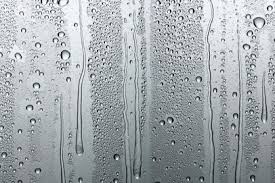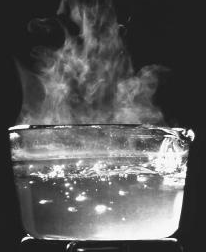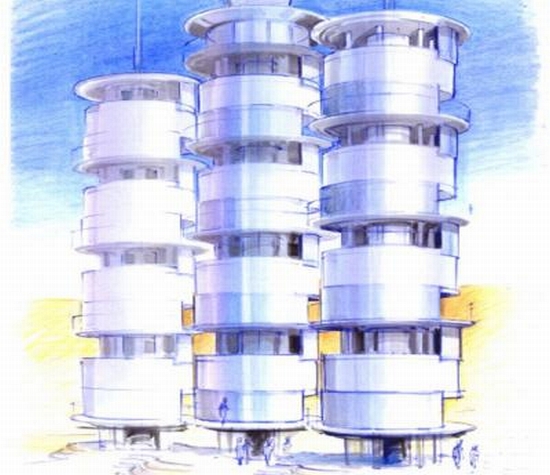StayingSustainable.com
How We Generate Water from the Air
In order to harvest water from air, you first need to understand why there are phenomena such as morning dew, or fogging windows, or “soda sweat”. In laymen’s terms (if “soda sweat” isn’t considered laymen’s terms) what is happening is that, literally, air is being turned into water.
This happens as a result of two things:
1 – Relative Humidity (Moisture in the Air)
2 – Temperature Differential between Air and Object

Got it? Good… Okay, just kidding.
Here is the gist of it. When you were in school, you learned that elements have three different states: gas, liquid and solid. The elements transform between these three states by heating and cooling. Consider a stick of butter. When it’s cold, it’s a block. As it warms, it becomes less solid and more liquid. As it warms more, such as in a frying pan for too long, it will pretty much disappear, except for the small amount stuck to your pan. It has gone from a solid, to a liquid, to a gas.
The same thing happens with an ice cube. The solid melts into a liquid and then evaporates into a gas. So there-in lies the answer. Water is a gas, that is contained in our atmosphere, in the form of moisture. So, the key to getting water out of the air, is turning it back into a liquid from its gaseous state in the air. But how?

Well consider this: Let’s say you have a boiling pot of water. As the water boils it evaporates into its gaseous state. What would happen if you put your face above the pot of boiling water? Well, condensation would form on your face. It isn’t sweat though. You haven’t exercised, your body hasn’t become warm enough internally to try to cool itself. It is condensation, which is the result of the surface of your face being cooler than the moisture in the air (or the water in its gaseous state).
Aha! So then, all we need are surfaces that are cooler than the temperature of the water moisture in the air, kind of. The idea is known as the “dew point temperature”. Based on the barometric pressure of an area, and the relative humidity of that area, there is a temperature at which water turns from moisture in the air to liquid on a surface. Any surface that is not significantly warmer than the dew point temperature will experience condensation. That condensation can be captured and used in the form of running liquid water.
The idea can get more complex than that, and will be discussed in a future edition of our blog (e-mail us at stayingsustainable@gmail.com if you would like to be notified). But the short is that because the relative humidity is changing, a surface that is cooled to cause the temperature around it to be at the dew point temperature can generate water regardless of outside temperature.

The question then becomes: How much energy should be spent to cool a surface to generate more water? There is a lot of analysis that can be put into that, which again, we will have to table until a future date. But as we discussed on the previous page, a mere $1200 can provide 26 gallons of water a day, almost 100 liters. It is recommended that everybody should drink about a half a gallon a day. That means around 50 people can be given the recommended amount of clean water a day, every day, for just $1200 and routine maintenance. It doesn’t take a rocket scientists to look at those numbers and determine that it is a sound investment.